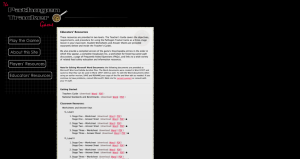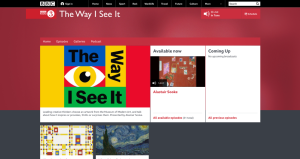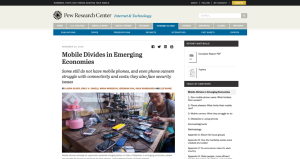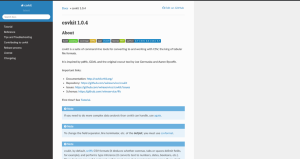Theme: Science Journalism
Back to Top
|
 |
|
 |
|
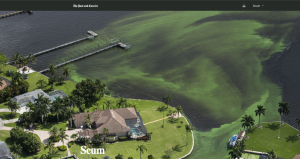 |
|
Scum
|
Science |
|
Readers interested in multi-media storytelling and its uses in science journalism may enjoy Scum, a 2017 story from reporter Tony Bartelme and a team of photographers and web developers at the Pulitzer-Prize winning publication The Post and Courier. Scum explores "colonies of fast-growing algae and bacteria" that created a nation-wide crisis. The interactive module takes readers on a journey that pairs investigative and scientific reporting with mesmerizing images to paint a vivid picture of the devastating effects of catastrophic algae blooms on communities across the country. It also includes insightful explanations of the health, economic, ecological, and social impact of these blooms. Readers can click through the entire story, or use the upper bar to select which of the following subsections they'd like to read: "Running amuck," "Toxic algae blooms," "Lake Hartwell algae bloom," "Charleston's first line of defense," or "About Hollings Marine Lab." In addition to scrolling through the story itself, readers can explore the interactive map, which pinpoints where these blooms have occurred. Not only does the story reveal a "portrait of muck and disruption," but it demonstrates the ways that multi-media tools can allow readers to engage with stories in unconventional and exciting ways. [EMB] |
|





|
|
 |
|
SciLine
|
Language Arts |
|
Need an expert source for a story, but not sure where to find them? A branch of the American Association for the Advancement of Science, SciLine provides "timely access to trustworthy, articulate experts...[on] science-related issues," by connecting journalists and field experts. Journalists can navigate to the online request form by selecting the "I Need an Expert" button in the For Journalists section (located mid-way down the page). Using this form, writers then detail the essentials they are looking for: the type of expertise needed, deadline, and a basic synopsis of the story they are writing. From there, SciLine's "matching experts" will connect journalists with credible scientists to assist their research. In addition to this tailored service, SciLine features a collection of Fact Sheets, "evidence-based, factual summaries of newsworthy scientific issues," on a range of topics, such as "Lead in U.S. Drinking Water," "Wildfire Trends in the United States," and "Gene Drives." These fact sheets provide condensed information, resource lists, and key definitions that may appeal to a wide variety of readers. Scientists interested in being a part of SciLine's expert database can also fill out a registration form under the For Scientists tab on the site. [EMB] |
|





|
|
 |
|
Diverse Voices in Science Journalism
|
Language Arts |
|
Diverse Voices in Science Journalism, a collection by The Open Notebook (TON), explores questions too often unasked in science journalism, such as "What's it like to report on science in a language that doesn't have a word for science?" This resource is guided by the principle that "our personal experiences, backgrounds, and circumstances inevitably color the way we tell stories," and seeks to uplift work, explore experiences, and examine important topics that will address a lack of diversity in the field. Under Interviews & Articles, readers will find a wealth of content on topics including: addressing the disproportionate amount of harassment experienced by journalists of color, using meaningful inclusion of diverse sources, prioritizing culturally competent and sensitive reporting, and navigating the visa application process. The TON Collections section offers educational resources, some in Spanish, on topics such as environmental journalism and starting a career in science writing. Aspiring science writers may also want to explore the Pitch Database, where they can filter by type, publication, writer, and year of publication. Each entry contains a link to the published story and a copy of the pitch originally sent by its writer. Diverse Voices in Science Journalism is a partnership between Open Notebook (a non-profit resource hub for journalists in the field) and the National Association of Science Writers' Diversity Committee. [EMB] |
|





|
|

